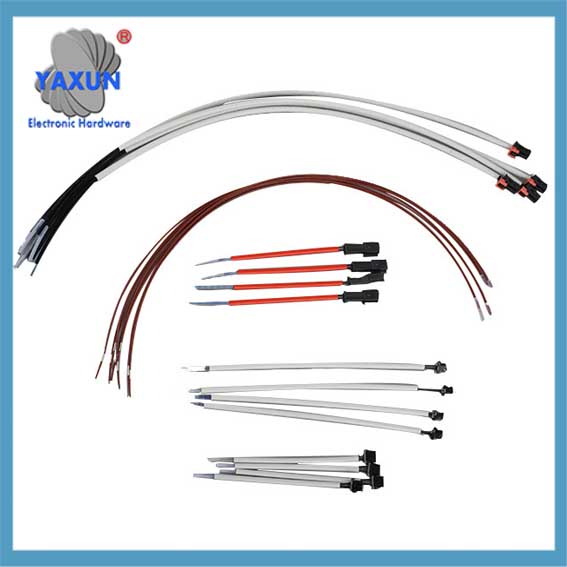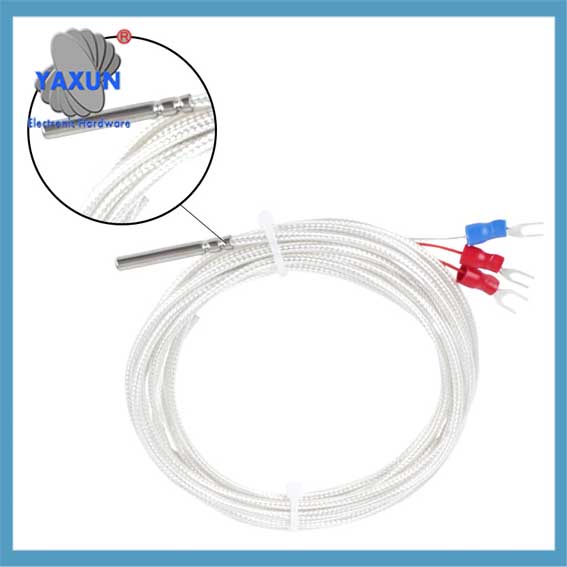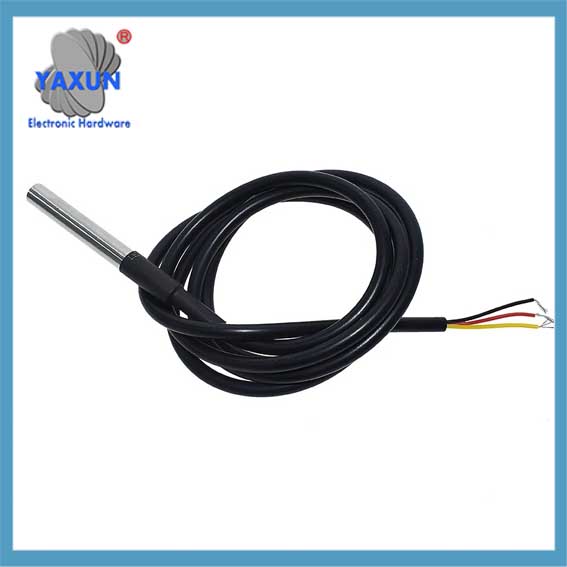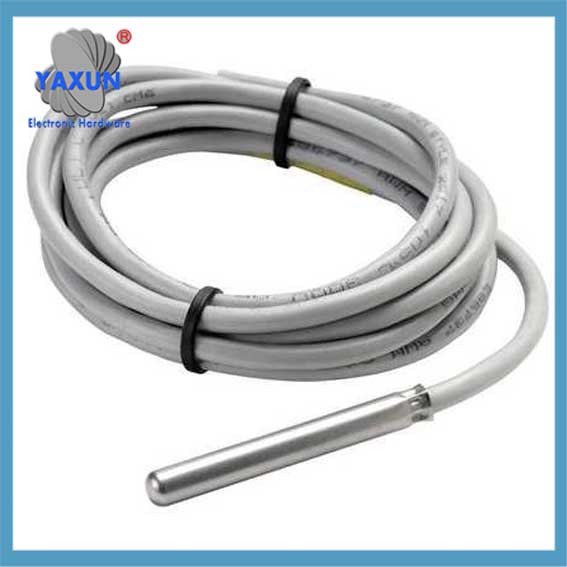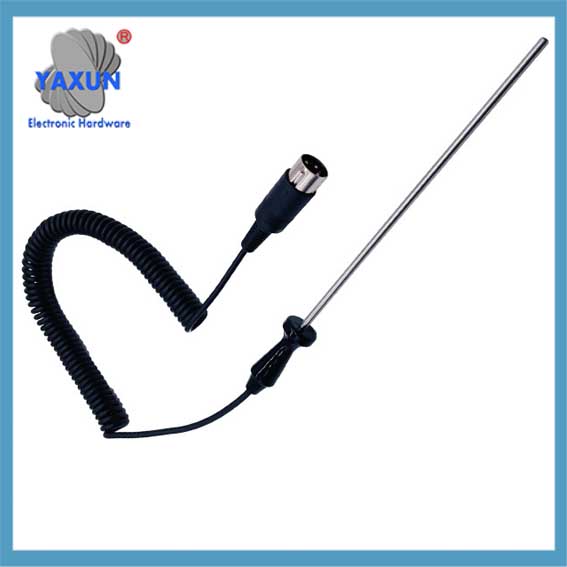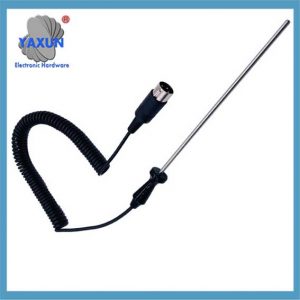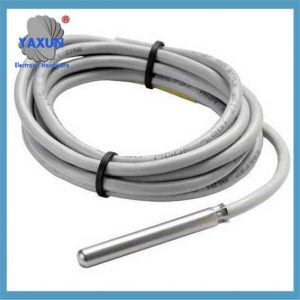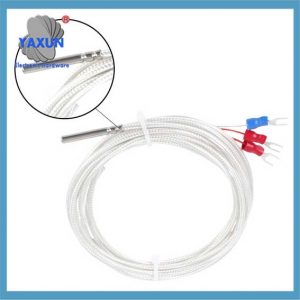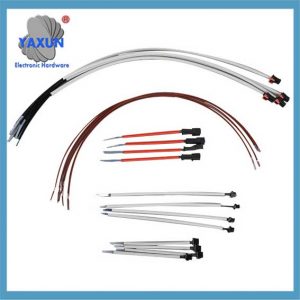Категорије производа
- топлотни осигурач 32
- Осигурачи површинске монтаже 12
- термистор 36
- Држач осигурача ПЦБ монтира 27
- Ожичење 6
- Носишта осигурача за сечиво 17
- термостат 50
- Електрични осигурач 24
- Сензор температуре аутомобилске температуре 7
- Термички прекидач 22
- Власник осигурача 36
- Сензор температуре 75
- Термички прекидач 68
- Осигурач за аутомобиле 20
- Вијак доле 8
Ознаке производа
НТЦ, ПТЦ, Пт100, ДС18Б20 за сензоре температурне сонде
Термопар сонда: Користи термоелектрични ефекат за мерење температуре, и има карактеристике широког опсега мерења и велике брзине одзива.
Сонда за термичку отпорност: користи особину да се отпор метала или полупроводничких материјала мења са температуром за мерење температуре, и има карактеристике високе тачности мерења и добре стабилности.
Полупроводничка сонда: користи особину да се проводљивост полупроводничких материјала мења са температуром за мерење температуре, и има карактеристике мале величине, мала тежина и ниска потрошња енергије.
НТЦ, ПТЦ, Пт100, DS18B20 Temperature probes and temperature sensors play an important role in the field of temperature measurement. The following is a detailed introduction to temperature probe sensors:
There are many types of temperature sensors, укључујући:
Thermocouples
These sensors are made of two dissimilar metals that connect at two points to form a junction. They are reliable, accurate, and can operate over a wide range of temperatures.
Отпорни температурни детектори (Ртс)
These sensors are based on the change in resistance of a metal as the temperature changes.
Термистори
These sensors use the temperature characteristics of semiconductor resistors, which change resistance as the temperature changes. Thermistors are sensitive and have high accuracy relative to their cost.
Негативни коефицијент температуре (НТЦ) термистори
These sensors are sensitive and can respond to very small temperature changes. They have a temperature range of -50 °Ц до 250 ° Ц.
Resistive temperature detectors
These sensors have positive temperature coefficients (ПТЦ) and offer precise temperature measurements. Међутим, they have poor sensitivity.
1. Definition and working principle
Temperature probe:
Дефиниција: A temperature probe is a device specifically used to measure temperature, and its core component is a temperature-sensitive element.
Working principle: A temperature probe uses sensitive elements (such as thermocouples, термички отпорници, полупроводници, итд.) to convert temperature changes into electrical signals for subsequent circuit processing or display.
Temperature sensor:
Дефиниција: A temperature sensor is a broader concept that includes a temperature probe and a signal processing circuit connected to it.
Working principle: A temperature sensor not only includes a sensitive element, but also has a signal processing circuit that can complete the acquisition, обрада и излаз температурних сигнала, usually in the form of digital or analog signals.
2. Types and characteristics
Temperature probe type:
Термопар сонда: Користи термоелектрични ефекат за мерење температуре, и има карактеристике широког опсега мерења и велике брзине одзива.
Сонда за термичку отпорност: користи особину да се отпор метала или полупроводничких материјала мења са температуром за мерење температуре, и има карактеристике високе тачности мерења и добре стабилности.
Полупроводничка сонда: користи особину да се проводљивост полупроводничких материјала мења са температуром за мерење температуре, и има карактеристике мале величине, мала тежина и ниска потрошња енергије.
Temperature sensor type:
Analog temperature sensor: outputs analog signals, which need to be converted into digital signals by analog-to-digital converters for subsequent processing.
Digital temperature sensor: directly outputs digital signals, has strong anti-interference ability, висока тачност, and is easy to integrate into the control system.
Intelligent temperature sensor: has self-diagnosis, самокалибрација, communication and other functions, и може да реализује даљински надзор и контролу.
3. Selection and application
Фактори селекције:
Application environment: Размотрите да ли измерено окружење има посебне услове као што је корозивност, висока температура, високог притиска, итд., тако да се изаберу одговарајући материјали и нивои заштите.
Опсег мерења: Изаберите одговарајући сензор у складу са опсегом температуре која се мери како бисте били сигурни да сензор може прецизно да мери унутар потребног опсега.
Захтеви за тачност: According to the accuracy requirements of the application for temperature measurement, select a sensor with corresponding accuracy.
Cost budget: Under the premise of ensuring performance, consider cost factors and choose cost-effective sensors.
Application areas:
Индустријска аутоматизација: used to monitor temperature changes in industrial equipment, machines and production processes to ensure normal operation of equipment and product quality.
Medical industry: used in medical equipment, temperature monitoring instruments and drug storage equipment to monitor patient temperature, ambient temperature and drug storage conditions.
Аутомобилска индустрија: used in electric vehicle motors, capacitors, DC converters, charging systems, as well as automobile engines, gearboxes, air conditioning systems and exhaust systems to monitor and control the temperature of various liquids and gases.
Agriculture and food processing industry: used in agricultural greenhouses, cold storage, food processing equipment and transport vehicles to monitor and control the temperature of agricultural products and food.
Other fields: such as air conditioning and refrigeration industry, military and aerospace industry, Internet of Things industry, итд. are also widely used.
ИВ. Use and maintenance
Инсталација: Install the sensor correctly according to the installation instructions to ensure good contact between the sensor and the object to be measured and avoid measurement errors caused by improper installation.
ожичење: Правилно повежите сигналну линију и струјну линију сензора да бисте осигурали стабилност и тачност преноса сигнала.
Калибрација: Редовно калибришите сензор да бисте били сигурни да његова прецизност мерења испуњава захтеве примене. The calibration process usually involves placing the sensor in a known temperature environment, comparing the difference between its output value and the standard value, and making necessary adjustments.
одржавање: Редовно чистите и одржавајте сензор да бисте избегли прашину, прљавштина, итд. that affect the measurement performance of the sensor. У исто време, pay attention to check whether the cable connection is loose or damaged, and replace damaged parts in time.
Укратко, temperature probe sensors have a wide range of applications and an important position in the field of temperature measurement. When selecting and using them, it is necessary to make comprehensive considerations based on the specific application scenarios and requirements to ensure the accuracy and reliability of the measurement results. If you have any other questions or need further help, please feel free to let me know.
Контактирајте нас
Чекам вашу е-пошту, ми ћемо вам одговорити у року 12 сати са драгоценим информацијама које су вам потребне.
 English
English Afrikaans
Afrikaans العربية
العربية বাংলা
বাংলা bosanski jezik
bosanski jezik Български
Български Català
Català 粤语
粤语 中文(简体)
中文(简体) 中文(漢字)
中文(漢字) Hrvatski
Hrvatski Čeština
Čeština Nederlands
Nederlands Eesti keel
Eesti keel Suomi
Suomi Français
Français Deutsch
Deutsch Ελληνικά
Ελληνικά हिन्दी; हिंदी
हिन्दी; हिंदी Magyar
Magyar Bahasa Indonesia
Bahasa Indonesia Italiano
Italiano 日本語
日本語 한국어
한국어 Latviešu valoda
Latviešu valoda Lietuvių kalba
Lietuvių kalba македонски јазик
македонски јазик Bahasa Melayu
Bahasa Melayu Norsk
Norsk پارسی
پارسی Polski
Polski Português
Português Română
Română Русский
Русский Cрпски језик
Cрпски језик Slovenčina
Slovenčina Slovenščina
Slovenščina Español
Español Svenska
Svenska ภาษาไทย
ภาษาไทย Türkçe
Türkçe Українська
Українська اردو
اردو Tiếng Việt
Tiếng Việt

